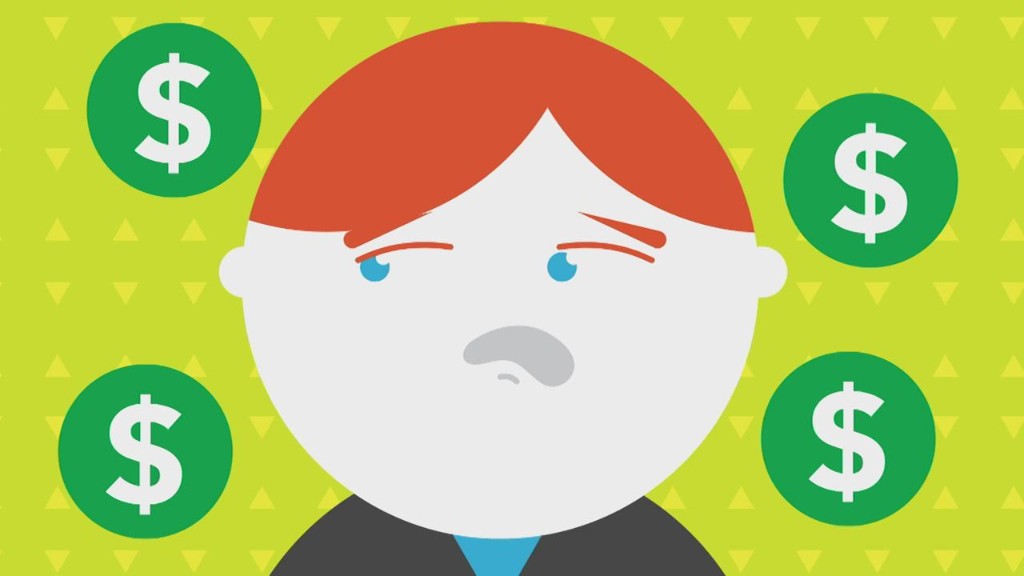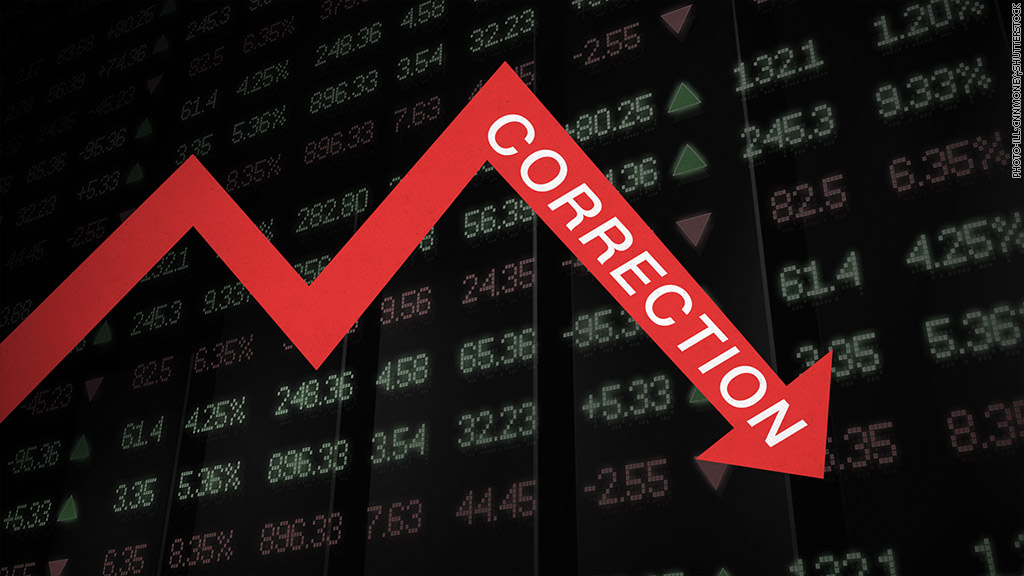
Monday's 331-point drop in the Dow was ugly. And the Dow was down more than 200 points in midday trading Tuesday before bouncing back a bit at the end of the day.
But let's put this in perspective: The Dow and S&P 500 are about 4% below their all-time highs from just a few weeks ago. So we are not even halfway to what's known as a correction, a 10% pullback from a recent peak.
And guess what? We need a correction. Badly.
They are healthy and occur often in normal bull markets, but we haven't had one for the S&P 500 since the summer of 2011. (Some other indexes, most notably the small cap-focused Russell 2000, did fall more than 10% from recent highs last year. though)

We've come close to a broader market correction a couple of times. Stocks were hit hard in late September and early October of last year and then again in the beginning of December.
But the market wound up going on a ferocious Santa Claus rally in the last few weeks of 2014 to finish near their record highs.
Related: Oil sinks further below $50
"It's been like waiting for Godot. We've been waiting for a correction for a long time. But it seems like every time stocks fall 5% or 6%, things turn around on a dime," said Paul Nolte, a portfolio manager with Kingsview Asset Management.
That could wind up happening again. But here's why a bigger slump in stocks may (and should) be in the cards.
The crude awakening. Oil's slide from $107 a barrel to below $50 has been one of the main reasons for the market volatility. Until oil prices stabilize, it makes sense for investors to be nervous about stocks.
Sure, lower oil prices are good news for consumers (and retail and airline stocks) but it's also a reflection of weakening demand on a global scale.
Related: Cheap oil is killing my job
It doesn't matter that the U.S. is still in decent shape economically. Corporate profits will likely suffer if Europe, China and other key markets are struggling.
Prices are stretched. Nolte said that his biggest concern about the market is that stocks are no longer cheap.
The S&P 500 is trading at more than 16 times 2015 earnings forecasts. That seems a little rich when you consider that earnings are expected to increase by less than 8% this year.
"Valuations are a little high. The sledding is going to get tougher over the next few years," Nolte said.
Related: Worried about stocks? Bonds look worse
Last one in, first one out? Only a month ago, CNNMoney's Fear & Greed Index was showing signs of Greed.
But the index, which tracks the key volatility gauge known as the VIX (VIX) and six other indicators of investor sentiment, is now in Extreme Fear territory. This shows how emotional the average investor can be.
What's more, research firm TrimTabs reported Tuesday that investors put $45.4 billion into stock market exchange-traded funds, or ETFs, in December. That was a monthly record.
"The buying frenzy suggests the U.S. stock market will keep stumbling into the New Year. ETF investors tend to buy high and sell low," said David Santschi, CEO of TrimTabs in the report. He added that "the bullish camp has become extremely crowded."
Risk on. Risk off. Another sign that investors may be temporarily falling out of love with stocks? Look at the bond market.
The yield on the 10-Year U.S. Treasury has tumbled below 2%. Yields fall when investors are buying bonds.
Yields should not be this low. The U.S. economy, after all, is in much better shape than the rest of the world. 2014 was the best year for the job market since 1999.
The Federal Reserve has also strongly suggested that it will begin to raise interest rates later this year. Yields usually go up when the market expects the Fed to hike rates.
Related: 3 reasons the euro is plunging
But investors are still buying bonds because the U.S. economy continues to be viewed as relatively stable, a so-called safe haven for cash.
If you're nervous about the market but have to put money somewhere, Treasuries look less risky than stocks, foreign bonds and commodities.
It's not time to panic. The good news is that if all these fear factors lead to a 10% drop in the market, that may scare off some of the speculators and make stocks more attractive again for long-term investors.
There are already plenty of decent values among blue chip companies. Several stocks may have been unfairly punished.
I ran a quick stock screen to find companies in the S&P 500 that are more than 10% below their 52-week highs but are also reasonably valued, have low levels of debt and solid earnings growth prospects.
The companies on the list range from industry giants Apple (AAPL), GM (GM) and Gilead Sciences (GILD) to beaten up consumer stocks Fossil (FOSL), Michael Kors (KORS) and GameStop (GME).
Even some energy stocks made the list, such as Valero (VLO), natural gas firm Southwestern (SWN) and oil services firm Cameron (CAM).
"There are some good buying opportunities right now. We are using cash to find bargains," said Tom Stringfellow, chief investment officer with Frost Investment Advisors. "But we are looking mostly at larger, more well-known conservative companies."


